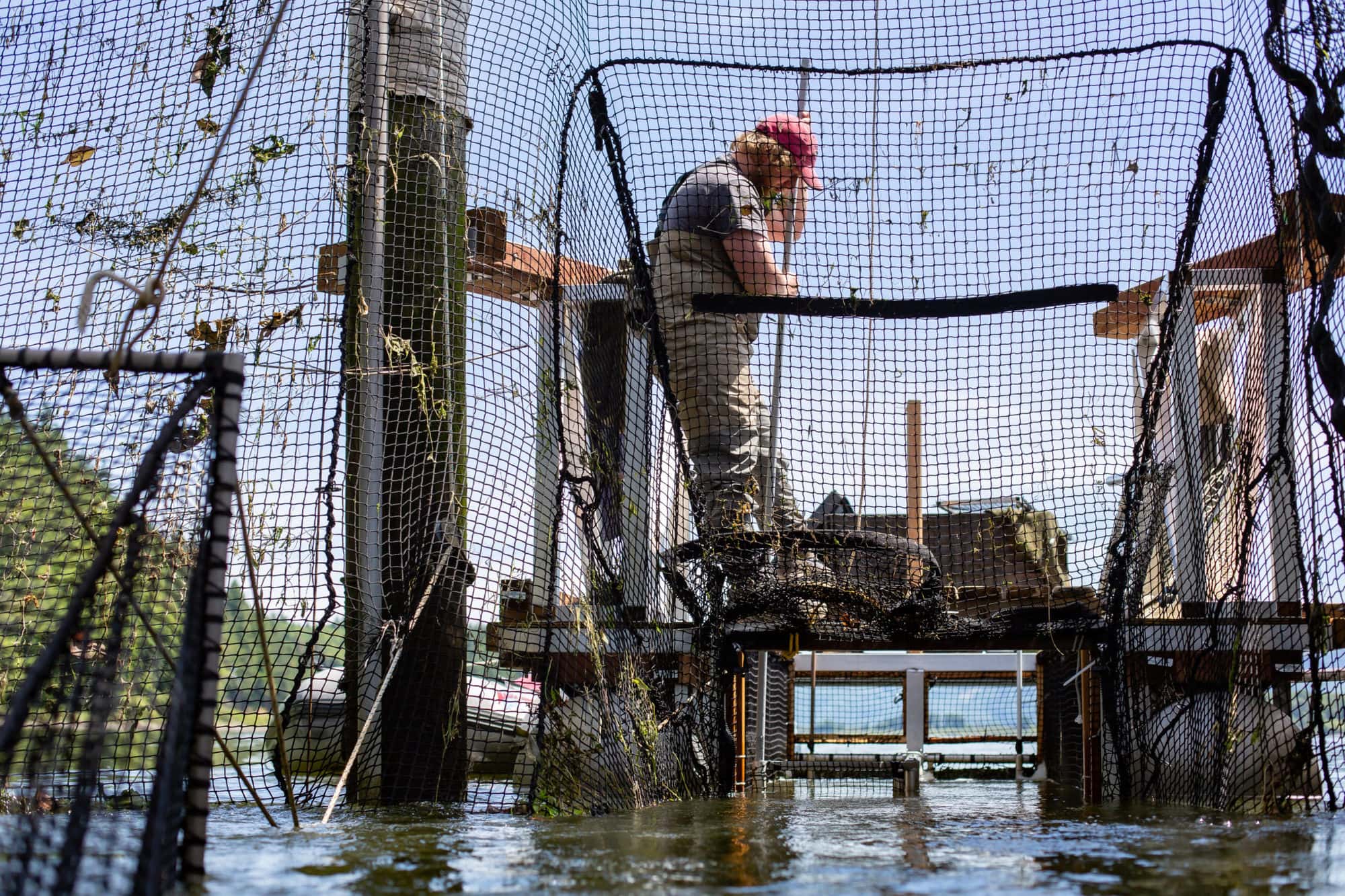
A new bycatch survival study of passively operated fish traps was recently completed for spring-run and summer-run Chinook Salmon in the Columbia River. The results provide further evidence of 100% bycatch survival from the fishing method, validating various studies for fall-run Chinook Salmon, Coho Salmon, Sockeye Salmon, and summer-run Steelhead that similarly have demonstrated 100% post-release survival from passively operated fish traps.
Back in 2019, Wild Fish Conservancy (WFC) conducted post-release survival studies for spring-run and summer-run Chinook Salmon to evaluate the potential of passively operated fish traps to selectively harvest hatchery fish while reducing bycatch mortality in lower Columbia River commercial fisheries. Between May and July, WFC’s research team tagged and genetically sampled over a hundred Chinook Salmon that had been captured through a newly developed passive capture technique that has since been utilized for various studies (including our most recent project in Clifton Channel, OR). Tagged fish in the study were monitored for upriver detection at the Bonneville Dam Passive Integrated Transponder (PIT)-tag detector to evaluate post-release survival from the fishing gear over a 167 km, 7 day migration.
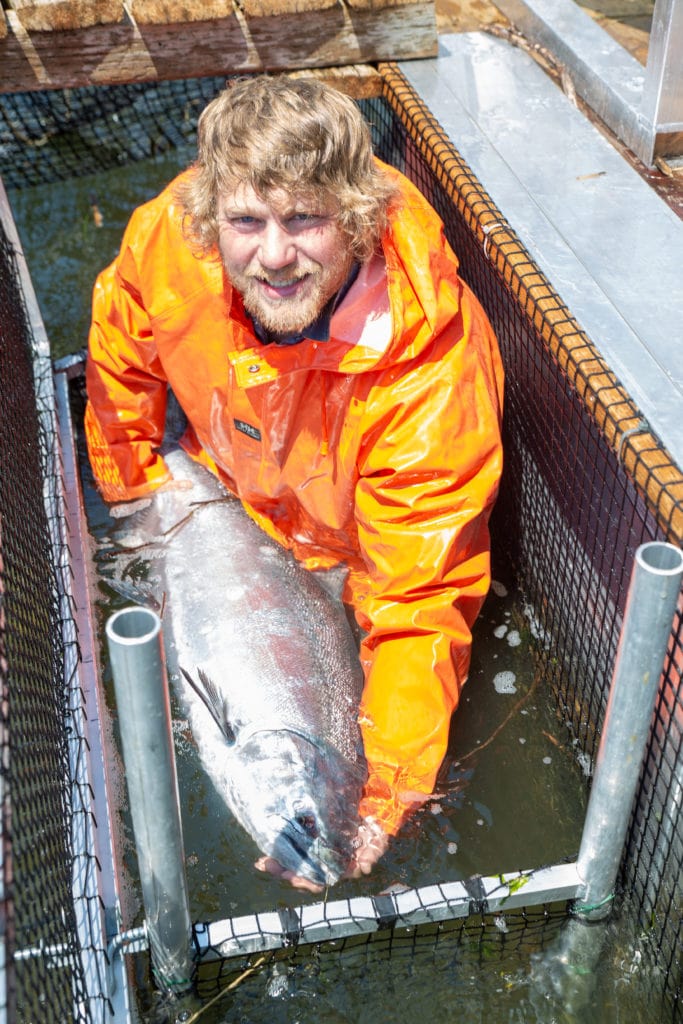
For this 2019 study of spring-run and summer-run Chinook Salmon, genetic results assigning each tagged fish to populations above or below Bonneville Dam were absolutely essential for completion of the post-release survival analysis to the tag detector at Bonneville Dam. This was due to the fact that some spring-run and summer-run Chinook Salmon encountered in the lower Columbia River originate from lower river populations and are destined to spawn in tributaries below Bonneville Dam. Therefore, any unbiased analysis of post-release survival to the Bonneville tag detector must account for the genetic destiny of each fish to ensure that survival is only analyzed for the fish that are heading above Bonneville Dam.
For over two years, WFC waited for these crucial genetic data to complete the post-release survival analysis. Now, after years of waiting, all of WFC’s hard work in 2019 is paying-off in a big way for management of Columbia River fisheries, wild salmon, and coastal fishing communities.
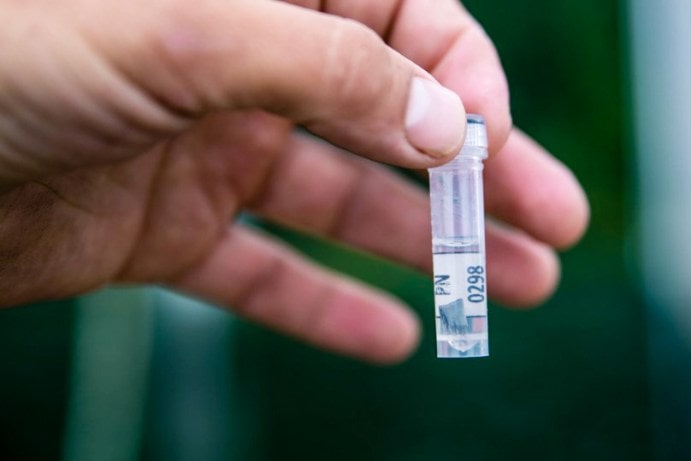
Just last week, the genetic data were finally secured–we are pleased to announce that the results from WFC’s latest survival analysis provide some of the most irrefutable and persuasive evidence to date that passively operated fish traps may provide sustainable fishing opportunities for hatchery fish (or other healthy and abundant stocks) while eliminating mortality to threatened and endangered wild salmon that co-mingle in the river.
Based upon the genetic results, we were able to pair the genetic data to 110 tagged spring-run and summer-run Chinook Salmon captured using passive operations with the fish trap. Based upon our tagged sample of fish that had genetically assigned to populations originating above Bonneville Dam (n = 88), we discovered that 100% of these passively captured fish survived the 167 km, ~7 day migration to Bonneville Dam.
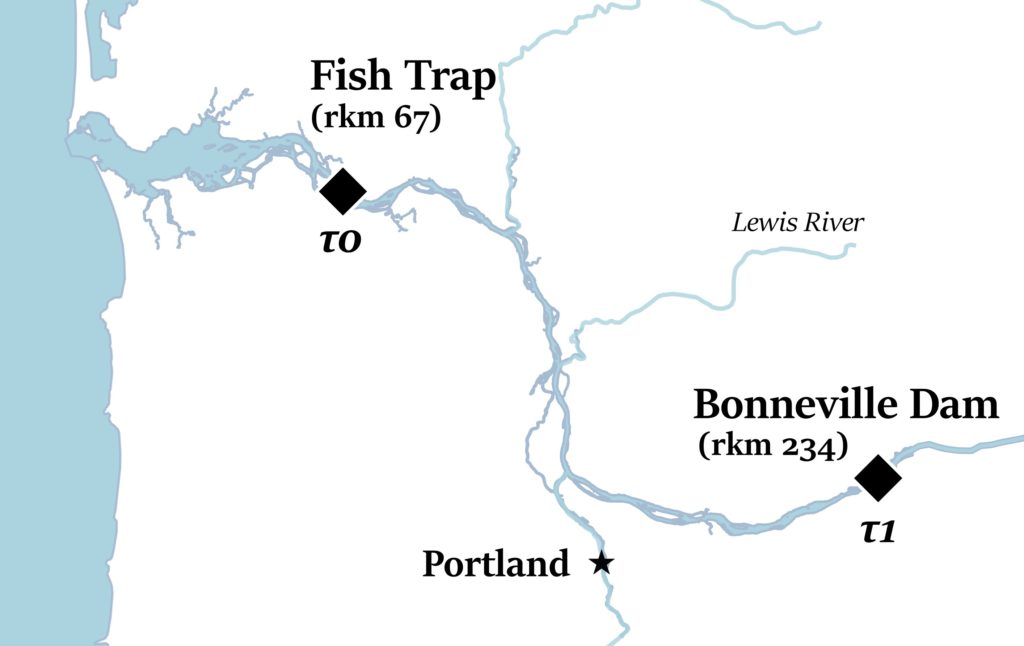
This finding is nothing short of remarkable as no control group was used to account for well-established factors known to bias survival rates low in the absence of a control group (e.g., tag loss, upriver mammal predation, research handling/tagging effects, etc.). In other words, 100% survival from this study means that the fish trap not only had a 0% mortality effect to Chinook Salmon at capture and release over 7 days, but not one tagged fish from the sample died from upriver marine mammal predation, not one tag fell off during the 167 km migration, nor did our research team damage a single fish during the rather stressful tag insertion and genetic sampling procedure.
Survival results like this have not been achieved for any other commercial fishing gear in the Columbia River to date, and given the survival estimate of 100%, no other fishing gear can do better. Findings from this major study not only fill a previous data gap for spring-run and summer-run Chinook Salmon, but the results validate the findings of prior studies by WFC, WDFW, and CRITFC that have consistently shown the post-release survival effect nearing 100% for adult fall-run Chinook Salmon, Coho Salmon, Sockeye Salmon, and summer-run Steelhead released from passively operated fish traps (Tuohy et al. 2020; Cox and Sippel 2020; Fryer et al. 2021).
Table 1. Post-release survival estimates from relevant studies for passive capture operations with fish traps (a: Cox and Sippel 2020; b: Tuohy et al. 2020; c: Fryer et al. 2021; d: Tuohy and Jorgenson 2022).
| Salmonid Stock | Year Studied | Methodology | Survival Estimate and 95% Confidence Interval |
| Summer Steelhead | 2017 | Paired Mark-Recapture (a) | 1.000 (0.783 – 1.000) |
| Fall Chinook | 2017 | Paired Mark-Recapture (a) | 1.000 (0.752 – 1.000) |
| Spring/Summer Chinook | 2019 | Unpaired Mark-Recapture | 1.000 (0.970 – 1.000) |
| Sockeye | 2019 | Paired Mark-Recapture (b, c) | 1.000 (0.974 – 1.000) |
| Coho | 2019 | Net Pen Holding (2 days) (b) | 1.000 (0.978 – 1.000) |
| Coho | 2020 | Net Pen Holding (4 days) (d) | 1.000 (0.975 – 1.000) |
| Coho | 2021 | Net Pen Holding (6 days) (d) | > 0.965 (0.947 – 0.968) |
| All Salmonid Stocks | All Years | All Methodologies | Mean = 0.995 |
As we move forward to finalize the manuscript for peer-review and publication in a scientific journal, we will keep you posted on the publication date for this major study. Ultimately, these results provide some of the most clear-cut and persuasive evidence to date that passively operated fish traps can dramatically reduce bycatch mortality of wild salmon in efforts to harvest sustainably in the Pacific Northwest.
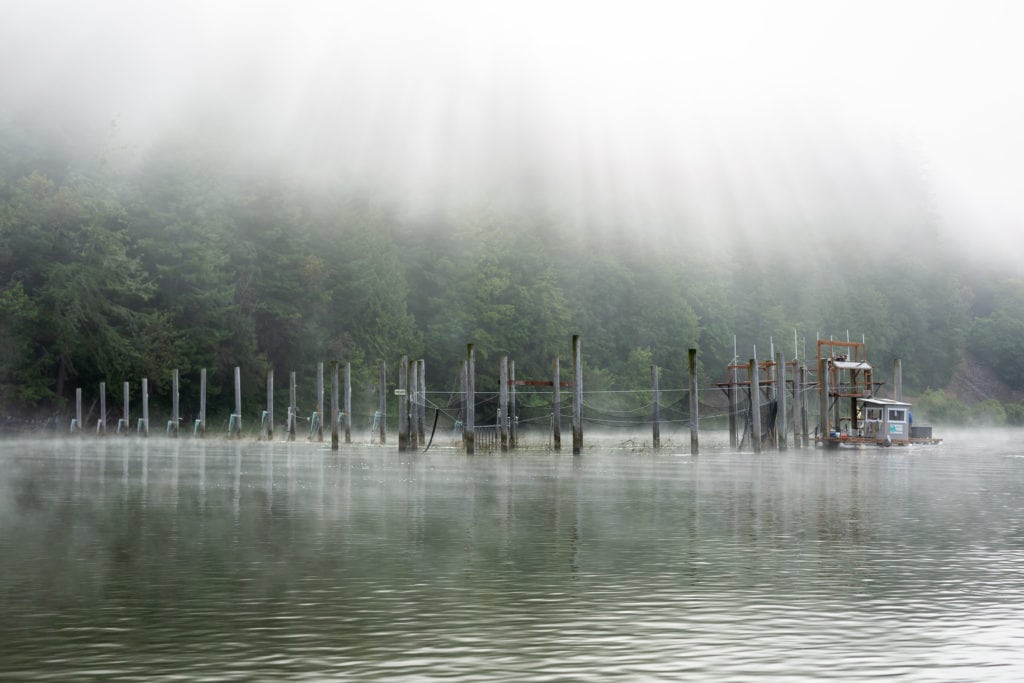
*This post was updated on May 5th, 2022 to reflect findings of the finalized data analysis for the study.
Join our mailing list to recieve important updates on our work, the latest wild fish news, & opportunities to take action to support wild fish.
This site is protected by reCAPTCHA and the Google Privacy Policy and Terms of Service apply.
Wild Fish Conservancy is recognized as a 501(c)3 non-profit by the IRS